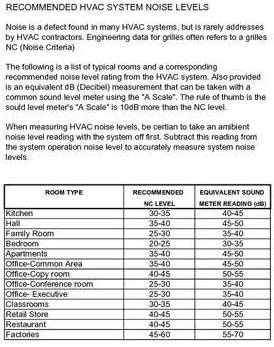|
Sound
Sound is the term for audible pressure oscillation in an elastic
medium. The sound pressure oscillates around the atmospheric pressure
in a sinus-shaped sound movement, provided the tone is pure.
Sound power Sound power is the energy per time unit, watt, which
the object submits. Sound power is calculated from the sound pressure
and is not measured. The logarithmic decibel scale has been developed
for sound power in a similar way for sound pressure. Sound power
is not dependent of the room’s construction, and is therefore
easier to compare between different fans.
Sound pressure Pressure develops when pressure waves move in the
air. Our ears translate the pressure as sound. The sound pressure
is measured in Pascal, Pa.
The smallest sound pressure that the ear can appreciate is 0.00002
Pa, which is the threshold of hearing. The largest pressure is
20 Pa, the upper threshold of hearing.
The large numerical difference in pressure between threshold of
hearing and the upper threshold of hearing, makes it difficult
to handle. A logarithmic scale is used to eliminate the large
numerical difference, which is based on the difference between
actual sound pressure level and the sound pressure at the threshold
of hearing. The scale has the unit decibel, dB, where the threshold
of hearing is 0 dB and the upper threshold of hearing is 120 dB.
Whether a sound is audible to the human ear depends on its frequency
and volume. The human ear can hear sounds in the 20Hz
20,000 Hz frequency range.
The lowest sound pressure the human ear can perceive lies at 2_105Pa
at 1,000 Hz.
Sound that is perceived as undesired or uncomfortable is usually
considered NOISE.
Noise criteria NR/dBA
NR criterion:
This specifies the permissible sound pressure
level as a function of the frequency.
dBA criterion:
This furnishes the sound meter with an A filter
to attenuate sound with frequencies of less
than 1,000 Hz. There are also B and C filters.
An A filter is usually used in connection with
ventilation.
It can often be of interest to determine the
relationship between dBA and NR values.
This can be calculated roughly as follows:
dBA = NR + 5 (dB)
Addition and subtraction of dB values
Example:
There are two sound sources of respectively:
LW1 = 40 dB and LW2 = 38 dB
The resulting sound power level can be
derived mathematically by logarithmic addition.
However, it is more practical to use the
diagram below for addition and subtraction of
dB values, respectively. As can be seen from
the diagram, a sound level of LWR = 42 dB
results from the two sound sources.
ADDITION
Difference to be added to the highest dB value
Difference between dB values to be added
SUBTRACTION
Value to be subtracted from the highest dB
value Difference between dB values to be
subtracted
|
 |
| |
|
| Sound reduction |
|
| Sound reduction,silencers |
|
| Sound
reduction , Architectural |
|
| |
|
|

